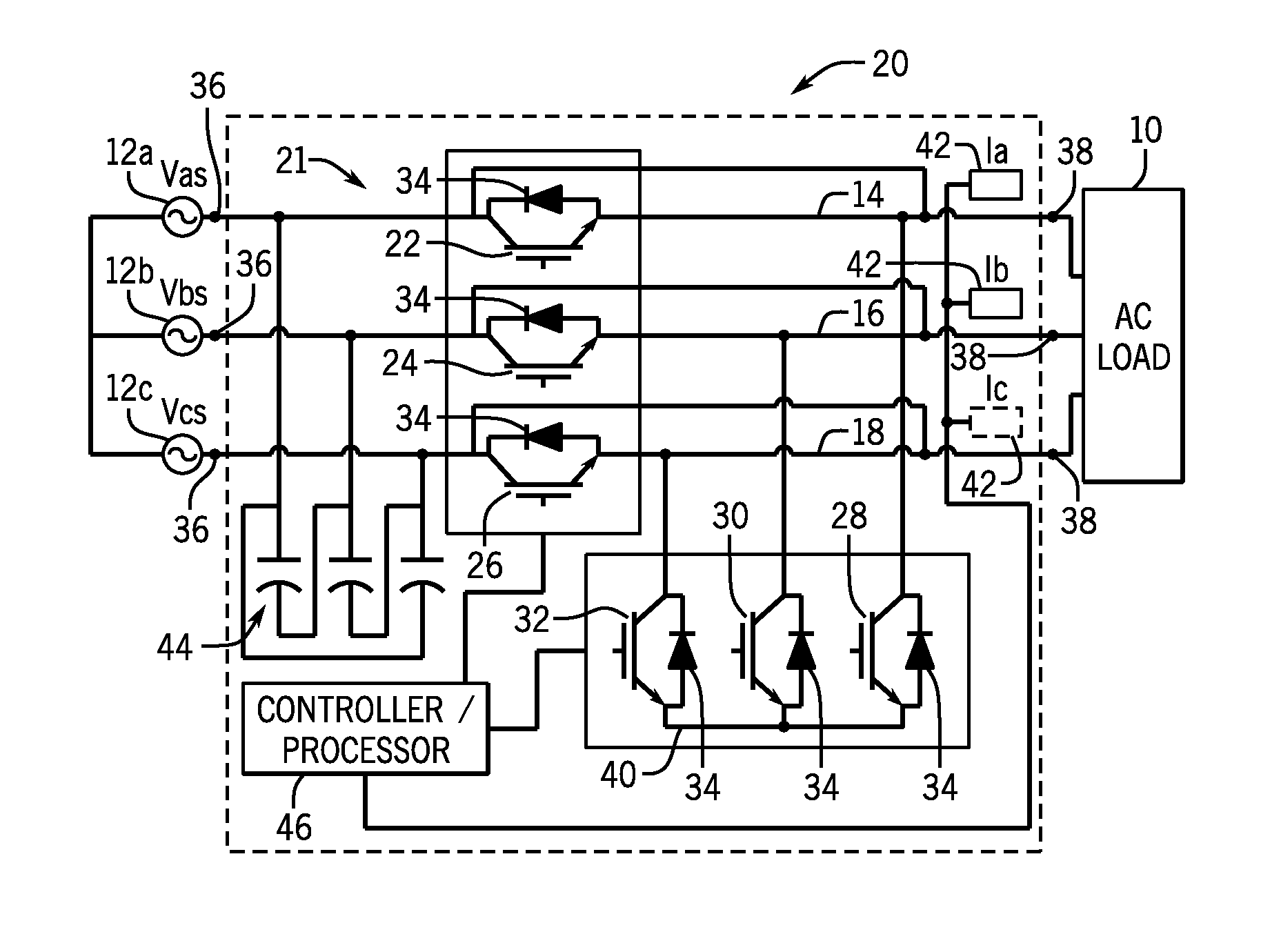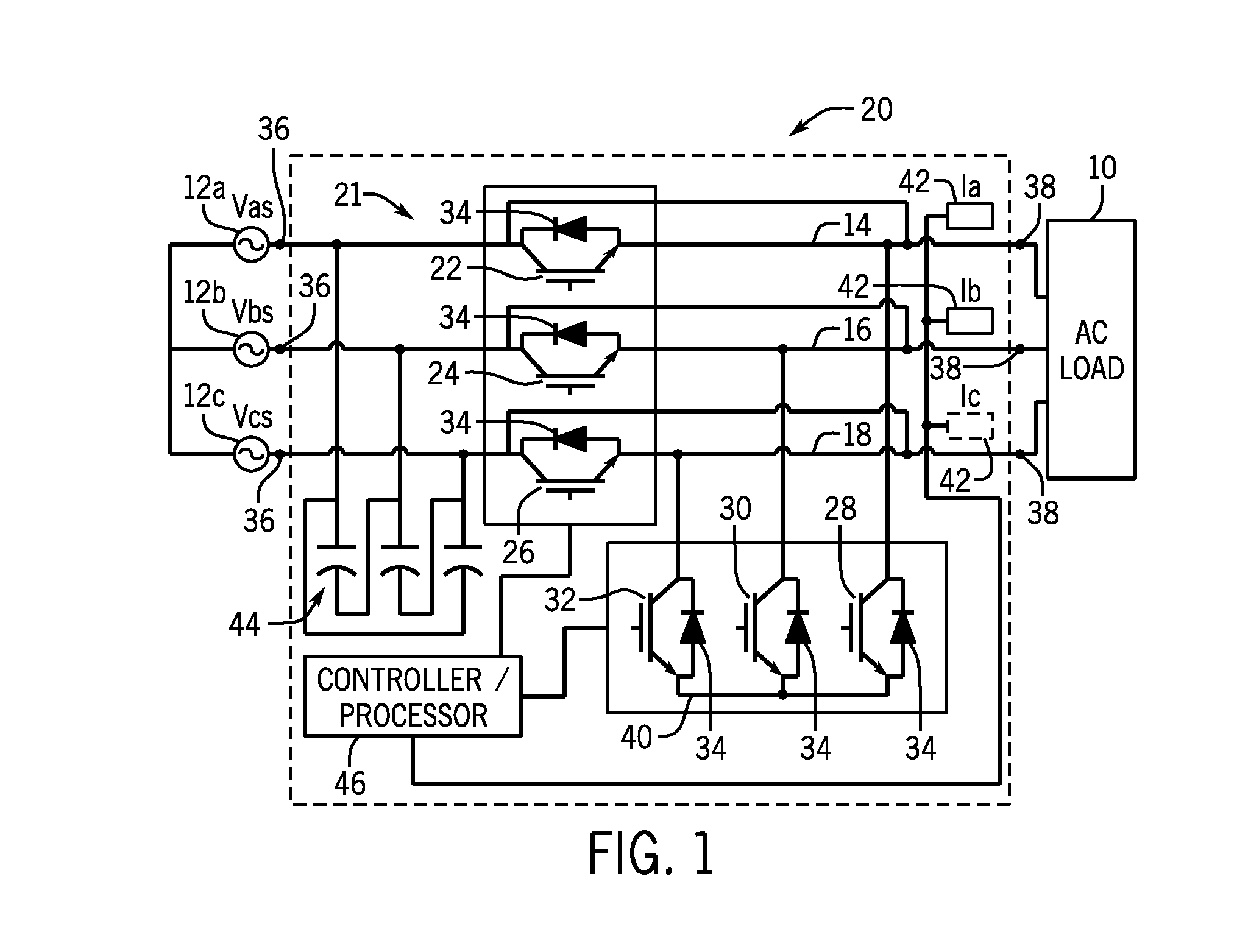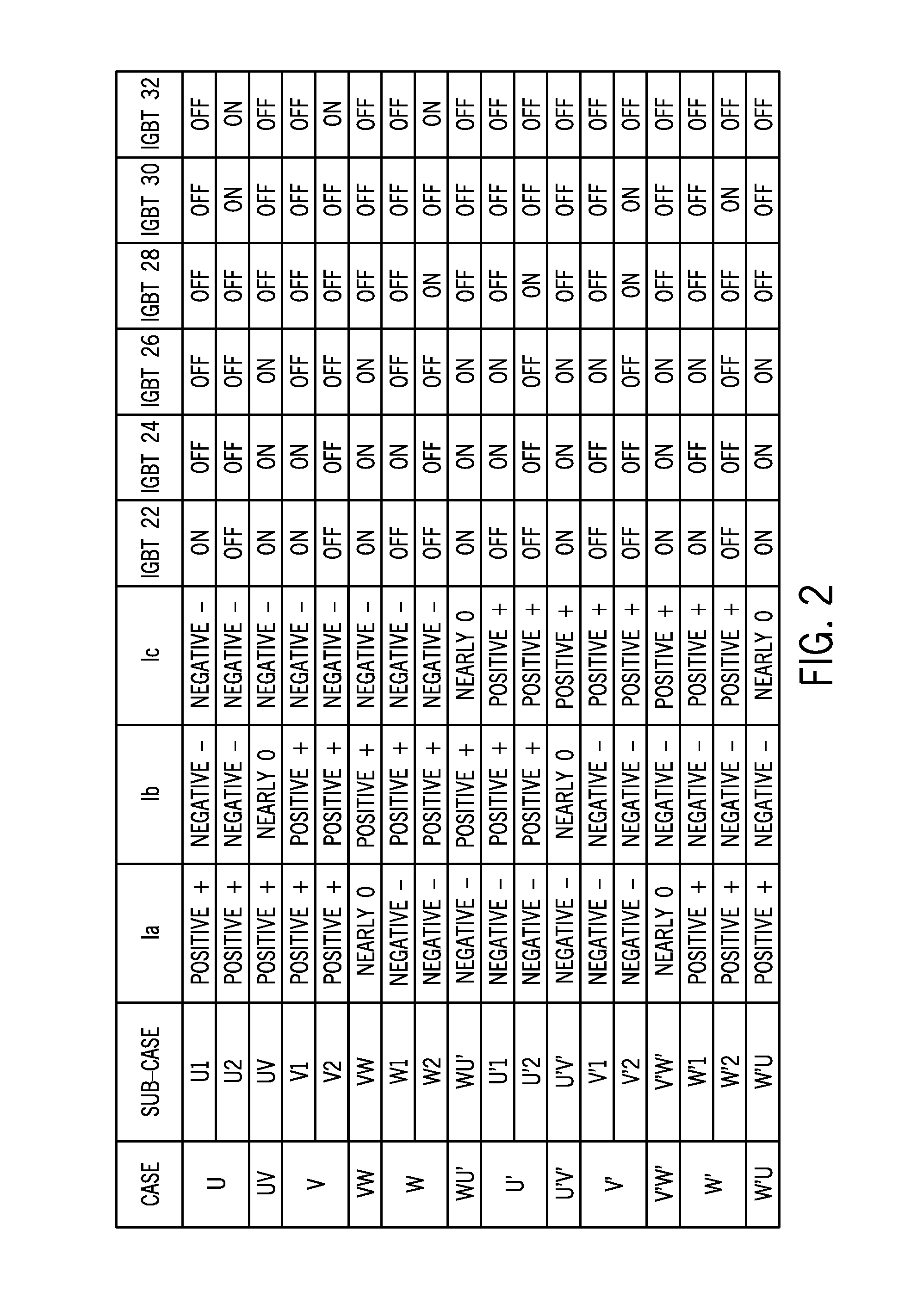System and method for safe switching in an AC-to-AC converter
a technology of ac-to-ac converter and ac-to-ac converter, which is applied in the field of safe switching of ac-to-ac converters, can solve the problems of inability to turn off in a dynamic manner, the inability to provide precise current control to scrs, and the cost of motor drives that incorporate igbts is typically significantly higher than a soft starter, so as to prevent a voltage spike
- Summary
- Abstract
- Description
- Claims
- Application Information
AI Technical Summary
Benefits of technology
Problems solved by technology
Method used
Image
Examples
example 1
[0029]In a first example, as a result of the initial routine, it is determined that Current Ia is positive while both Ib and Ic are negative (State U). Then, IGBT 22 (i.e., the line-side IGBT in Phase A) is left ON and all other IGBTs 24, 26, 28, 30, 32 are turned OFF or left OFF. Full line voltage is then applied to the load terminals 38 during an active period. This is Sub-State U1 in FIG. 2. At any time (i.e., “control time”) during this State U, the voltage at the load terminals 38 can be switched from line voltage to zero by turning OFF IGBT 22 and turning ON IGBTs 30, 32 (Sub-State U2), so as to transition to a free-wheeling period. IGBTs 30, 32 are the two floating-neutral side IGBTs that are not in Phase A. The “control time”, therefore, divides State U into two periods, first an active period, second a free-wheeling period. The ratio of the active period over the sum of the active period and the free-wheeling period is referred to as the duty cycle, and is a key element in ...
example 2
[0032]In a second example, two of the currents are positive, such as Ia and Ib, while the third one (Ic) is negative. This is State V in FIG. 2. In such a case, the line-side IGBTs 22, 24 in those two phases will be in the ON condition during an “active period” while all other IGBTs 26, 28, 30, 32 are OFF (see Sub-State V1). A “free-wheeling period” can be similarly obtained by turning OFF these two switches IGBTs 22, 24, and turning ON IGBT 32 in the third phase (Sub-State V2).
[0033]The same logic applies in the states labeled W, or U′, V′, and W′ in FIG. 2. In particular, States U′, V′, and W′ are mirror images of States U, V, W, with whichever current is positive in State U, V, or W, being negative in States U′, V′, and W′, and vice-versa.
[0034]With respect to the switching logic described in FIG. 2, it is recognized that the switching logic is predicated on the accurate sensing of the direction / sign of the current in all phases. However, due to current signal noise or other poss...
PUM
 Login to View More
Login to View More Abstract
Description
Claims
Application Information
 Login to View More
Login to View More - R&D
- Intellectual Property
- Life Sciences
- Materials
- Tech Scout
- Unparalleled Data Quality
- Higher Quality Content
- 60% Fewer Hallucinations
Browse by: Latest US Patents, China's latest patents, Technical Efficacy Thesaurus, Application Domain, Technology Topic, Popular Technical Reports.
© 2025 PatSnap. All rights reserved.Legal|Privacy policy|Modern Slavery Act Transparency Statement|Sitemap|About US| Contact US: help@patsnap.com



